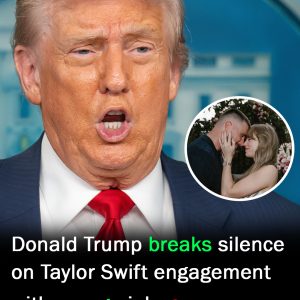In the high-pressure, meticulously controlled universe of cable news, decisions are made with the precision of a surgeon’s scalpel.
When a network chooses to part ways with a top-tier personality, it is often viewed as a calculated, strategic move designed to protect a carefully curated brand.
That’s what many believed happened in early February when one of the most prominent networks in America, MSNBC, and its primetime host, a journalist with a reputation for sharp, uncompromising commentary, went their separate ways.
The network’s executives reportedly felt they had successfully neutralized a “dangerous” voice, one whose willingness to challenge orthodoxy and corporate interests made her a lightning rod for controversy. But what they saw as a clean break has since transformed into a seismic shift in the media landscape, fueled by the very woman they thought they had sidelined.

The journalist’s journey through the media trenches has always been unconventional. For two decades, she navigated the tumultuous waters of television news, building a reputation as one of the industry’s most incisive and fearless voices. She rose through the ranks at MSNBC, climbing from a contributor to a primetime anchor, all while amassing a loyal and dedicated following. Her show became a must-watch for many, thanks to her unflinching interviews, keen analysis, and a notable willingness to tackle subjects that others in the mainstream media often avoided. It was this fearless approach that made her indispensable to viewers hungry for authenticity, but also made her a source of unease for network executives.
The decision to part ways was, in part, a response to a perfect storm of internal and external pressure. Her on-air commentary, often a direct critique of corporate power and political establishment, pushed the boundaries of what was considered acceptable on a major news network. For a network that relies on a delicate balance of public trust, advertiser support, and political influence, her voice was a wild card—one that was simultaneously a huge asset and a significant liability. In their eyes, letting her go was a necessary step to maintain control and protect the brand.
But what MSNBC didn’t see coming was the immediate aftermath. When the news of her departure broke, the reaction was swift and deeply polarized. Her critics celebrated, calling the move a necessary correction and a victory for traditional journalism. Her supporters, on the other hand, saw it as a dark day for independent thought and a clear sign that mainstream media was more concerned with toeing the line than with telling the truth. While the network executives breathed a collective sigh of relief, the journalist herself was already putting a plan into motion—a plan that would soon send shockwaves through the entire industry.

Within weeks, she announced the launch of her own digital platform, an independent media outlet unencumbered by the constraints of a traditional network. Her pitch was simple and powerful: a new model for fearless journalism, unfiltered commentary, and a direct line to the stories that matter. The platform, she promised, would be sustained entirely by subscribers, with no advertisers and no corporate overlords to answer to. The call to action was simple, yet revolutionary: support real news, for real people.
The response was nothing short of astonishing. In just four months, her new platform, “Reid Out Loud,” amassed a staggering 160,000 paying subscribers. This wasn’t just a fan club; it was a movement. The numbers spoke for themselves: at an average of $7 per month, she was generating over $1.1 million in monthly revenue, translating to nearly $13 million annually. To put that into perspective, this level of digital monetization is a goal that many legacy newsrooms struggle to achieve even with massive staffs and decades of history. The rapid and meteoric rise of her independent venture sent a clear and unmistakable message: the appetite for independent, subscriber-based journalism is not only real, but it is growing at an exponential rate.
This success comes at a time when cable news is facing an existential crisis. Ratings are in a freefall, advertising revenue is shrinking, and younger audiences have long since migrated to digital platforms. The old model, which relies on a constant stream of commercials and a relentless chase for ratings, is crumbling. Her subscriber-based approach is part of a broader, more profound trend reshaping the entire media industry. Platforms like Substack and Patreon have empowered journalists to bypass the traditional gatekeepers and connect directly with their audiences. This model offers not only financial stability but also a level of editorial freedom that is simply not possible in a corporate news environment.
For her, independence means more than just financial autonomy; it’s about a return to journalistic integrity. Free from the demands of advertisers and network executives, she can pursue stories that truly matter, hold power to account, and speak the truth without fear of reprisal. Insiders at MSNBC and rival networks have privately admitted that letting her go may be one of the biggest mistakes in cable news history. They not only lost a unique and powerful voice, but they inadvertently fueled a competitor whose influence now extends far beyond the confines of traditional television. The industry is watching and learning from her success, as her story becomes a blueprint for how to retain top talent and adapt to a rapidly shifting media landscape.
What’s next for the independent mogul? Sources close to her say she’s just getting started. Plans are reportedly underway to expand her platform into a full-fledged multimedia empire, complete with podcasts, investigative documentaries, and live events. She is also said to be in talks with other independent journalists, with the goal of creating a network of voices united by a commitment to fearless reporting. Her success has already begun to influence the national conversation, with stories broken by her team making headlines in mainstream outlets and her interviews with whistleblowers prompting congressional hearings.
In the end, what began as a strategic move by a major network has become a case study in unintended consequences. Her transformation from network anchor to independent media mogul is not just a personal triumph—it’s a powerful sign that the old rules no longer apply. In a world hungry for truth, accountability, and real connection, she has shown that it is possible to build something lasting outside the confines of traditional media. Her story is a blueprint for the future of journalism, a future where courage, community, and conviction matter more than corporate approval.





